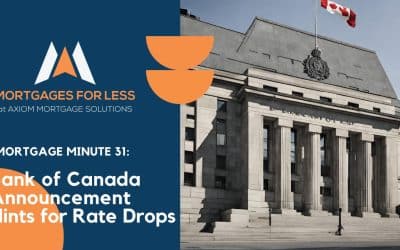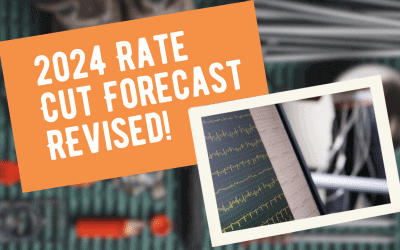Coming into the new year, 5 year fixed rates were available at most lenders anywhere from 1.39% to 1.64%. Those rates are gone now. But it isn’t time to panic. All the reasons that rates were low are still here. Like most things, rates overshot the mark while dropping, and are now likely stabilizing.
In December I shared the projections for interest rates in 2021 and told you that rates will stay low for most of the year. That is still true. Interest rates around 2% are still crazy low and have never been seen before. I still expect to see fixed mortgage rates near 2% for most of the year. Springtime often brings rate competition as banks hit the middle of their fiscal year, and work hard to hit their annual targets.
As of today, we can see a five year fixed interest rate as low as 1.74% still, but I don’t expect that to be around much longer. The majority of five year fixed rates are sitting currently between 1.94% and 2.24%.
The question people ask is why are rates coming up? Is there not still a pandemic? Don’t rising interest rates mean that there are good things happening in the economy?
Sure, vaccines are now available. There is light at the end of the tunnel for getting out of this pandemic. Hopefully, the economic harm will be short-lived.
In the United States, there is the expectation of slightly higher inflation than previously expected. This is putting upper pressure on the bond rates which actually have a major impact on Canadian fixed mortgage rates.
Here in Canada, we don’t really know what will happen. There is certainly a sentiment that this run-up in bond yields will be temporary. Nothing ever stays stable. Nothing ever trends consistently. However, it could be that interest rates as low as 1.49% for a five-year fixed term are gone forever. But, that does not mean that rates will return right away to 3% or higher.
Were fixed interest rates trend closely to the bond rates, variable rate interest mortgages and the retail prime rate is very closely tied to the Bank of Canada overnight rate.
This week, on March 10, 2021, the bank of Canada made its second interest rate decision announcement of the year. There was an expectation among economists that the bank of Canada would continue to keep its overnight rate the same, but perhaps indicate that they would start backing off on their other monetary policy of quantitative easing. While the bank did keep its interest rate the same, it did not budge at all on its current commitment of using quantitative easing to keep interest rates low across the yield curve. This is good news for home buyers. This is good news for people who are refinancing debt. And this is good news for people who have upcoming mortgage renewals.
For the first time in a long time, it is time to have a discussion about variable interest rates. Variable interest rates are still available under 1.5%. If fixed interest rates continue to stay between 2.0 and 2.5%, there is a good argument to consider a variable rate with the prime rate not poised to increase for quite some time.
The goal of the bank of Canada is to keep inflation between 1% and 3%. Currently, inflation is toward the lower end of that band.
While there are some encouraging signals in the economy, the Bank noted that there is still a lot of slack in the system and a lot of uncertainty surrounding the virus and the path of economic growth. The bank is concerned about the spread of the new variants of COVID-19 and considers that one of the largest downside risk to positive economic activity. It could slow things down or add uncertainty. Employment nationally is still well below pre-pandemic levels. Unemployment in Alberta is expected to hover around 9.5% for most of the year. This is still quite a bit higher than normal unemployment rates.
The bottom line is that the Bank of Canada remains committed to holding its interest rate at its lower level until the economic slack is absorbed and the inflation target is sustainably achieved. The Bank of Canada project so this will not happen until sometime in 2023.




0 Comments